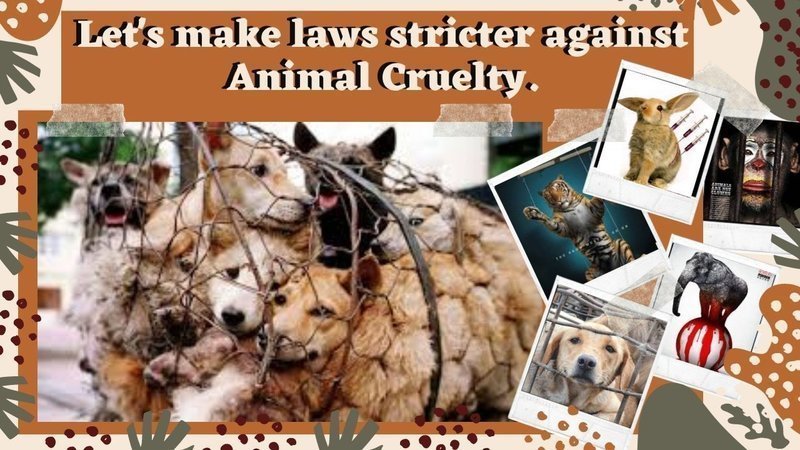Animal cruelty laws have been a topic of contention for quite some time. The juxtaposition of humans’ affection for pets against the brutality inflicted on helpless creatures presents an inherent contradiction that is difficult to reconcile. While many advocates ardently believe that existing legislation is insufficient in protecting animals from maltreatment, others assert that laws are in place but poorly enforced. This article aims to delve deeper into the crux of the matter, examining whether current animal cruelty laws are stringent enough in our society and the repercussions of their inadequacies.
To fully understand the state of animal cruelty laws, one must first appreciate the varying frameworks under which these laws are categorized. Broadly, these laws can be classified into two segments: felony acts and misdemeanor acts. Felony statutes typically encompass egregious behaviors like severe physical assault, torture, or killing of animals, whereas misdemeanor statutes tend to address neglect or minor forms of abuse. Upon examination, one might find that many jurisdictions have made strides toward enacting more severe penalties for heinous crimes against animals, yet an unsettling question remains: do these laws translate effectively into a deterrent against cruelty?
One observation that stands out is that despite the existence of laws intended to shield animals from harm, the rate of abuse remains disturbingly high. According to various reports and investigations, cases of extreme neglect, abandonment, and even torture continue to plague animal shelters and sanctuaries nationwide. The misconception that animal cruelty is a rare occurrence is dispelled when one considers that many acts go unreported, often due to insufficient interaction between communities and law enforcement agencies. This dissonance raises a critical inquiry: are our laws merely ornamental, devoid of the necessary teeth to bring about real change?
Furthermore, a significant issue arises concerning the disparity in enforcement of animal cruelty laws across different geographical locations. In urban environments where public concern for animal rights is heightened, local authorities may take a more rigorous stance against offenders. Conversely, in rural areas where agrarian lifestyles dominate, animals are often viewed merely as commodities, which leads to leniency in policing and a lack of accountability for acts of cruelty. Such inconsistency appears to stem from cultural perceptions that can vary remarkably within the same state, let alone across the nation. This not only complicates the legal landscape but also allows a patchwork of protections that ultimately fail to safeguard the most vulnerable.
Legislative initiatives are underway in many areas, yet they often fall short. Activists advocate for harsher penalties that match the severity of the crime, asserting that fines and short sentences do little to deter repeat offenders. Some proposals suggest lifetime bans from pet ownership for those convicted of serious animal abuse, a measure that aligns the consequences more closely with the societal perception of the crimes in question. While empowering legislative bodies to pass new laws is essential, equally crucial is the associated imperative for requisite training and resources for law enforcement. Animal control officers and police need not only to understand the intricacies of animal welfare laws but also to have adequate support to execute investigations effectively.
Societal attitudes also play a pivotal role in shaping the framework of animal cruelty laws. Many individuals harbor a fascination with animals, viewing them as companions or integral parts of their families. Yet, the undercurrent of indifference towards certain forms of animal exploitation—such as factory farming or use in entertainment—is troubling. This complicity, often born out of convenience or lack of awareness, has led to a collective inertia that undermines the existence of stronger legal protections. If society does not perceive certain practices as cruel, can we expect lawmakers to act with the necessary urgency?
The animal welfare movement itself has evolved, demanding not only better laws but a transformation in the cultural narrative surrounding animals. It advocates for comprehensive education to raise awareness on animal rights and welfare and to bridge the gap between humane ideals and reality. This storyline must emphasize that animals are sentient beings, deserving of respect and protection. Education programs can facilitate a shift in perspective, transforming the way individuals perceive responsibility towards animals and fostering a compassionate society willing to advocate for stronger legal frameworks.
Lastly, one cannot overlook the intersectionality of animal rights with other social justice issues. Many activists argue that neglecting animal welfare is inherently tied to broader systemic injustices, such as poverty and racial inequality. Individuals from disadvantaged backgrounds may suffer from a scarcity of resources that prevent them from providing adequate care for their animals. Understanding these multidimensional factors is essential when tackling the issue of animal cruelty. Comprehensive solutions must therefore integrate social welfare programs and community support, ensuring that individuals are not forced into circumstances that may lead them to unintentionally harm animals.
In closing, the strictness of animal cruelty laws is a multifaceted issue that requires comprehensive scrutiny. While we may find some legal frameworks robust, enforcement lags woefully behind, often obscured by societal attitudes and cultural norms. The pursuit of stronger protections hinges not just on the enactment of new laws but on fostering a collective awakening—one that resonates with empathy, education, and an unwavering commitment to change. As we continue to scrutinize the efficacy of current legislation, it becomes evident that nuanced approaches, addressing both legal and societal dimensions, are essential in the relentless fight against animal cruelty.






